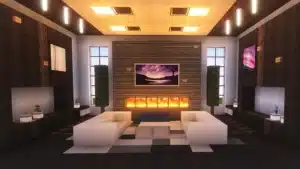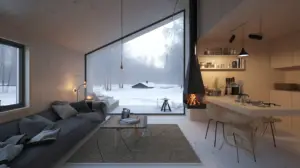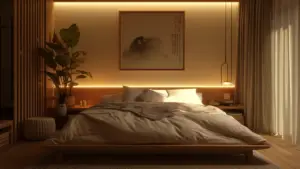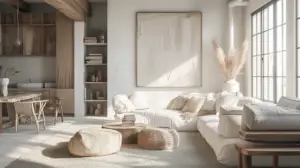Free Shipping On All Orders
20 Art Deco Interior Ideas 2024 You Will Love
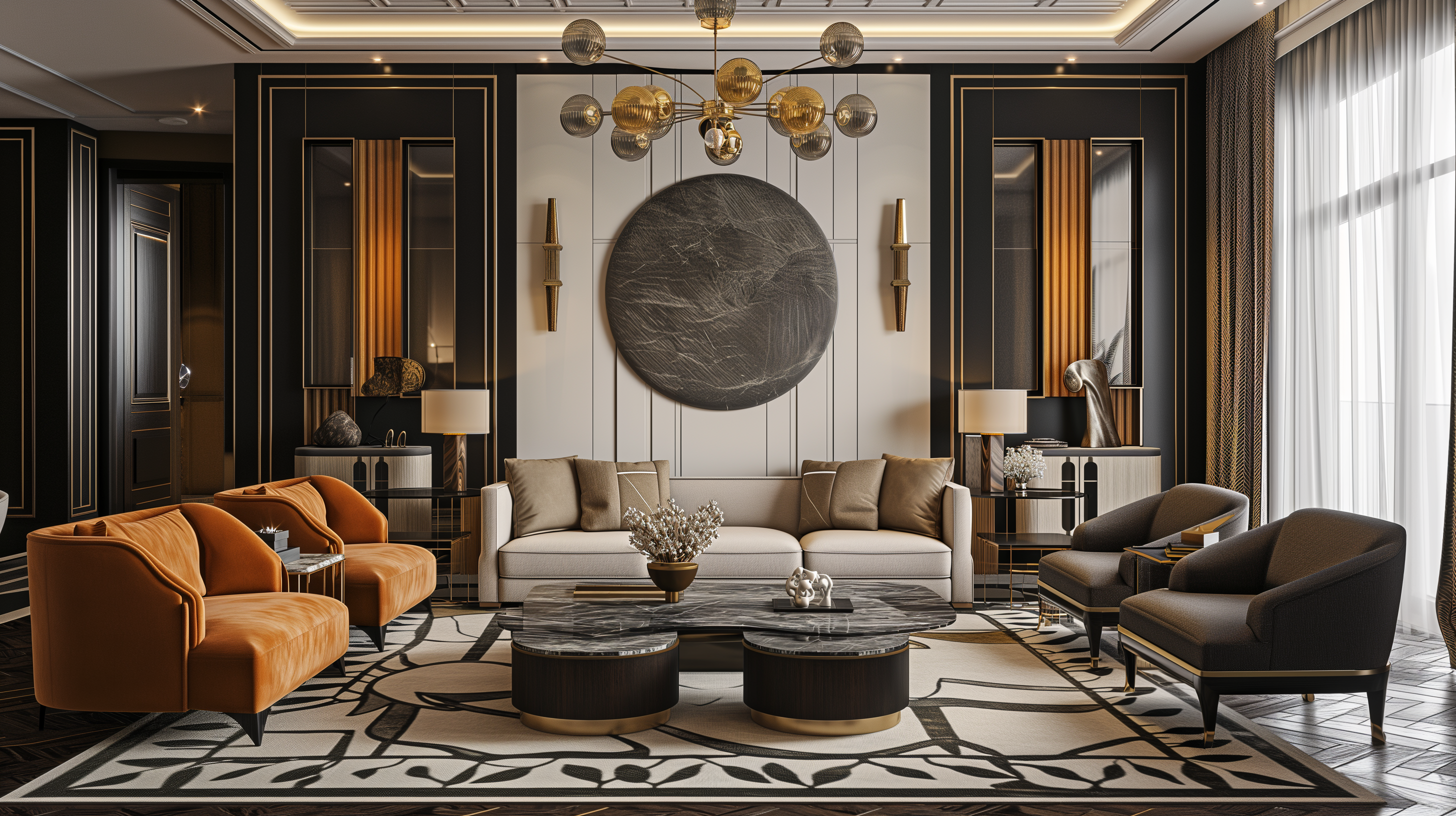
Art Deco Design Fundamentals
In addressing Art Deco interior design, it’s crucial to focus on the movement’s rich historical context and its defining aesthetic features which deeply impacted architecture and design throughout the 1920s.
History and Origins of Art Deco Interior Design
Art Deco emerged in the early 20th century, reaching prominence in the 1920s and 1930s. Born in France, the style showcased at the 1925 International Exposition of Modern Industrial and Decorative Arts in Paris, swiftly proliferated across Europe and North America. It encapsulated the era’s spirit of modernity and opulence, standing in contrast to the prevailing styles of the time.
Defining Characteristics
Art Deco is epitomized by its emphasis on symmetry, geometric shapes, and streamlined forms precise, and yet, remains luxurious and opulent. Here’s a closer look at the specifics:
- Geometric Shapes and Patterns: I see Art Deco incorporating abundant geometric forms, such as chevrons, zigzags, and sunburst motifs. These shapes are not merely decorative; they also highlight the style’s fascination with modernity.
%22%20transform%3D%22translate(2.2%202.2)%20scale(4.3125)%22%20fill-opacity%3D%22.5%22%3E%3Cellipse%20fill%3D%22%23b0b0b0%22%20rx%3D%221%22%20ry%3D%221%22%20transform%3D%22rotate(4%20-3382.4%201432.4)%20scale(144.77351%2036.82374)%22%2F%3E%3Cellipse%20fill%3D%22%23161616%22%20rx%3D%221%22%20ry%3D%221%22%20transform%3D%22matrix(153.3667%20-70.99055%2037.60527%2081.24174%2054%2075.2)%22%2F%3E%3Cellipse%20fill%3D%22%23525252%22%20rx%3D%221%22%20ry%3D%221%22%20transform%3D%22matrix(28.9513%2052.66223%20-32.98838%2018.13552%2085.1%20121.9)%22%2F%3E%3Cellipse%20fill%3D%22%23060606%22%20cx%3D%22169%22%20cy%3D%22176%22%20rx%3D%2234%22%20ry%3D%2219%22%2F%3E%3C%2Fg%3E%3C%2Fsvg%3E)
by Pinterest - Luxurious Materials: Combining various rich materials – from lacquered wood to silky fabrics – distinguishes Art Deco. I find metal accents of chrome and brass are also quintessential to this style, adding a layer of sophistication.
%22%20transform%3D%22translate(1.5%201.5)%20scale(2.92188)%22%20fill-opacity%3D%22.5%22%3E%3Cellipse%20fill%3D%22%23f4f4f3%22%20rx%3D%221%22%20ry%3D%221%22%20transform%3D%22matrix(70.67785%20-2.46056%201.55714%2044.72762%20166%20253.3)%22%2F%3E%3Cellipse%20fill%3D%22%23191919%22%20cx%3D%2239%22%20cy%3D%22162%22%20rx%3D%2255%22%20ry%3D%2255%22%2F%3E%3Cellipse%20rx%3D%221%22%20ry%3D%221%22%20transform%3D%22rotate(-115.8%2014.6%205.5)%20scale(33.38452%2046.73932)%22%2F%3E%3Cellipse%20fill%3D%22%23c2c2c2%22%20cx%3D%22191%22%20cy%3D%2287%22%20rx%3D%2229%22%20ry%3D%2239%22%2F%3E%3C%2Fg%3E%3C%2Fsvg%3E)
by Pinterest - Streamlined Appearance: In both Art Deco architecture and interior design, there’s a seamless flow and aerodynamic linearity to shapes and forms, underpinning the movement’s forward-looking ethos.
This straightforward examination underscores the timeless allure of Art Deco, whose principles continue to inform contemporary design.
Art Deco Interior Elements
I find that Art Deco interior design is distinguished by specific elements that together create a look that’s both glamorous and functional. Employing a characteristic color palette, luxurious materials, and distinctive shapes, the style evokes the opulence of the early 20th century with a modern twist.
Color Palette
The Art Deco color scheme is known for its use of bold, rich colors like deep blues, bright reds, and gleaming golds balanced by softer, neutral shades like creams and beiges. This contrast is not just striking but also creates a dynamic visual interest in the space.

Materials and Textures
Materials are a cornerstone of Art Deco design, with a preference for luxurious and high-quality textures. Italian marble, mirror finishes, ebony woods, and metallic finishes in gold, brass, steel, and chrome are heavily used to convey a sense of elegance and opulence. Surfaces commonly exhibit a high gloss, adding depth and light to the space.

Furniture and Form
Furniture pieces in Art Deco are as much about form as they are about function. Sofas and chairs typically feature sleek lines and are often upholstered with luxurious fabrics. I’ve noticed that geometric shapes play a major role, creating a stylized yet simplistic silhouette that’s timeless.

Lighting and Metals
Lighting fixtures not only illuminate but also serve as statement pieces reflecting the period’s fondness for the innovative use of metals and glass. Chrome and steel are common materials, often designed with geometric and angular forms that enhance the decor without overwhelming it.

Patterns and Motifs
Patterns and motifs in Art Deco design are unmistakable, frequently featuring repetitive, geometric shapes such as zigzags or chevron patterns. Floors, walls, and even ceilings can become canvases for these design patterns, providing visual rhythm and a sense of movement through meticulous symmetry and repetition.

Key Art Deco Spaces
In my exploration of Art Deco interior design, I’ve come to appreciate the importance of thematic consistency across living spaces. The elegance of the Art Deco period shines through in the careful selection of luxurious materials, bold colors, and symmetrical patterns.
Living Room Essentials
In my living room, velvet upholstery is a cornerstone, adding a touch of sophistication and comfort. Key elements to consider here are bold geometric shapes and high-contrast color schemes. For furniture, sleek lines with rich woods or shiny metallic finishes can evoke that classic Art Deco feel. Here’s how I suggest balancing these elements:
- Furniture: Streamlined shapes with glossy wood or chrome accents.
- Accessories: Think sunburst mirrors and angular lampshades.
- Upholstery: I prefer velvet for richness; geometric patterns are essential.
- Wallpaper and Paint: I’d go for bold, solid colors or Art Deco-style wallpaper.

Bedroom Aesthetics
In the bedroom, the aesthetic pivots to a sanctum of tranquility while retaining Deco grandeur. I use rich, luxurious finishes sparingly to maintain a restful atmosphere. Here’s my take on essentials for a bedroom:
- Color Palette: I suggest muted versions of bold Art Deco colors for a serene backdrop.
- Bed Linens: Look for high-quality fabrics with subtle Art Deco motifs.
- Furniture: A sleek, lacquered bedside table or a bold headboard can serve as focal points.
- Lighting: I prefer frosted glass or metallic fixtures that provide a soft glow.

Bathroom Designs
In the bathroom, Art Deco style can transform a functional space into a lavish retreat. For my bathroom, I choose fixtures that reflect the era’s luxurious sensibilities paired with modern comforts. A focus on the following elements ensures consistency:
- Tiles: Black and white checkerboard or subway tiles with dark grout lines are my favorites.
- Finishes: Chrome or brass fittings give that quintessential Deco glamour.
- Wall Treatments: Marble is a high-end choice, but for a budget-friendly option, I opt for wallpaper with metallic accents.
- Accessories: A vintage-inspired mirror frame or a set of Deco-style sconces can complete the look.

Art Deco Influences and Evolution
I’ll explore how the lavish and iconic Art Deco style drew from various influences and how it reflected the aspirations of its time, leading to its enduring charm and global impact.
Art Nouveau Roots
Art Deco’s emergence can be traced back to Art Nouveau, an artistic movement known for its fluid lines and organic forms that dominated France and much of Europe at the turn of the 20th century. The transition from Art Nouveau to Art Deco represented a shift towards a more structured and geometric aesthetic. Yet, the two styles share an emphasis on luxury and fine craftsmanship. For instance, the intricate motifs of Art Nouveau evolved into the more stylized and geometric patterns of Art Deco.
Skyscraper Symbolism
The rise of the skyscraper coincided with the height of Art Deco’s popularity, symbolizing technological progress and the modern age. Iconic buildings like the Chrysler Building and the Empire State Building in New York City cemented the style’s connection to modernity and ambition. Their towering forms utilized Art Deco’s signature geometric designs, with setback architecture often adorned with sunburst patterns and sleek lines, echoing the zeitgeist of advancement and urbanization.

Global Expansion
As a reflection of the era’s technological progress and cultural fascination with different lands, Art Deco spread rapidly across the globe. The style’s growth was marked by its adaptability, incorporating various regional influences into its core design principles. Luxurious materials and bold symmetry found in French and European Art Deco interiors became intermixed with local motifs, from the sunbursts that adorned American skyscrapers to the depictions of distant cultures and modernist aesthetics that reached as far as Australia and China, showcasing Art Deco’s truly global appeal.
Incorporating Art Deco in Modern Design
Art Deco lends itself beautifully to modern spaces through its distinct colors and bold geometric patterns. By fusing the opulence of the past with contemporary materials and designs, I can create a space that is both timeless and forward-thinking.
Complementary Colors and Accents
Choosing the right colors is crucial when incorporating Art Deco elements into modern design. My palette often revolves around stark contrasts such as black and white, softened with creams, beiges, and jewel tones like emerald green, navy blue, and ruby red. Accents in silver add a hint of sophistication and glamour. Here’s how I often organize color schemes:
- Primary Colors: Black, White, Cream
- Secondary Colors: Beiges, Blue, Green
- Accent Colors: Silver, Jewel Tones

Modern Materials and Innovations
To authentically merge Art Deco into modern styling, I incorporate materials like lacquer and stainless steel, which provide both a vintage feel and a sleek, contemporary look. Subtle touches of these materials can be introduced through furniture trims, lighting fixtures, or decorative items. For a bold statement, a lacquered wall or a large stainless steel art piece never fails to impress.
- Furniture: Lacquered console tables, stainless steel frames
- Decor: Mirrored accents, metallic vases
- Lighting: Geometrically patterned lamps with stainless steel bases

Blending Traditional with Contemporary
The harmony between traditional Art Deco and modern style lies in the careful balance of elements. I achieve this by pairing bold colors and geometric designs inherent to Art Deco with the minimalist and functional characteristics of modern design. For instance, using a piece of Art Deco furniture as the centerpiece of a room while keeping the surrounding elements understated is an approach I advocate for.
- Furniture: Feature a prominent Art Deco chair
- Patterns: Introduce geometric rugs or artwork
- Fashion Influence: Translate the elegance of 1920s fashion into textiles and decor

Decorative Details and Finishing Touches
When I design spaces with Art Deco inspiration, I focus on opulent finishes and eloquent details that underscore the era’s timeless appeal. Here’s how I approach these vital components of Art Deco interior design:
Wall Decor and Surfaces
For wall treatments, I often select bold wallpapers featuring geometric patterns or intricate motifs. Mirrored surfaces and metallic accents in gold or silver can reflect light, adding depth and a hint of glamour.
- Wallpaper: Geometric, symmetrical patterns.
- Finishes: Metallic accents in gold or silver.

Flooring and Rugs
On floors, I lay down rugs with dramatic designs, typically in jewel tones or bold colors, to anchor the room. Hardwood or tiled flooring with curved details can also mirror the distinct lines seen throughout Art Deco interiors.
- Rugs: Bold patterns, rich colors.
- Flooring: Hardwood with inlays, tiles with curved details.

Stylish Accessories
The accessories I choose are often vintage pieces that add character to the room. Lighting is key, with dramatic light fixtures that are both functional and sculptural. Striking mirrors serve as focal points.
- Lighting: Sculptural and bold light fixtures.
- Mirrors: Vintage and curved designs.

Textiles and Upholstery
I indulge in luxurious textiles like velvet to evoke the period’s opulence. When it comes to upholstery, bold colors and rich fabrics complement the overall design, while curtains in lavish fabrics offer both privacy and style.
- Fabrics: Velvet, silk, and other lush materials.
- Upholstery: Rich colors, sumptuous fabrics with geometric or symmetrical patterns.
Frequently Asked Question
What are the key characteristics of Art Deco interior design?
Art Deco interior design features geometric shapes, sleek lines, bold colors, and luxurious materials like marble and chrome.
What are the typical motifs and patterns used in Art Deco interior design?
Common motifs in Art Deco design include zigzag patterns, chevron motifs, stepped forms, and sunburst shapes.
Which materials and textures are commonly used in Art Deco interior design?
Art Deco interiors often incorporate materials such as lacquer, glass, mirror, and luxurious fabrics like velvet and suede.
If you liked this post about Art Deco Interior Design, don’t forget to follow us on Pinterest so you don’t miss any more interior design news!




